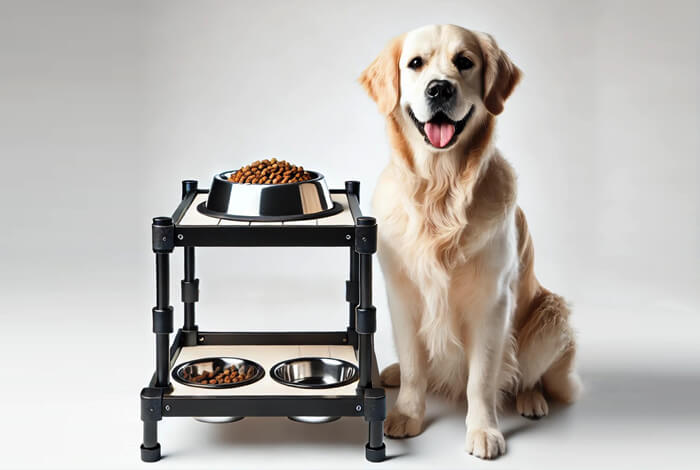![]() Reviewed By Joana Garrido DVM
Reviewed By Joana Garrido DVM
Megaesophagus in dogs disrupts the nerve and muscle function in the esophagus, causing this organ’s inability to transport food normally to the stomach.
Although this illness is rarely curable, it can be managed through the following dietary adjustments:
1. Reduce Meal Size
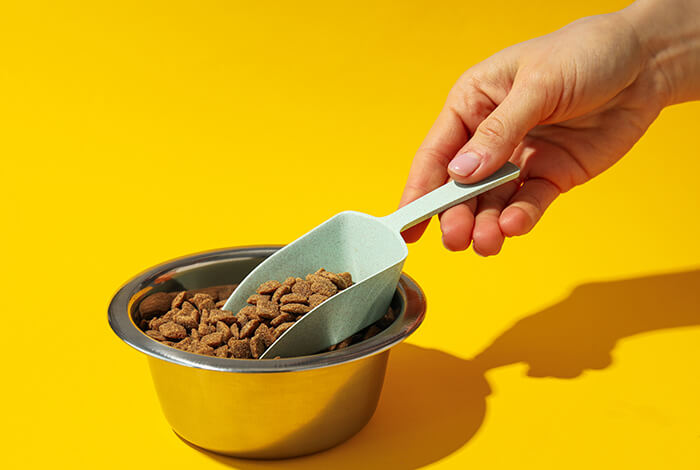 Megaesophagus in dogs makes it difficult for the stomach to digest large meals. Thus, it would be better to space out mealtimes throughout the day so the digestive tract has more time to rest.
Megaesophagus in dogs makes it difficult for the stomach to digest large meals. Thus, it would be better to space out mealtimes throughout the day so the digestive tract has more time to rest.
Avoid feeding 1 or 2 large portions of food. The ideal strategy is to split one whole meal into multiple smaller meals, around 3 to 4 portions a day.
Follow a consistent feeding schedule to prevent disrupting the regular digestive process in dogs with megaesophagus.
With this in mind, inform all family members not to free-feed Fido and make sure that they know his scheduled mealtimes.
2. Select the Right Dog Food
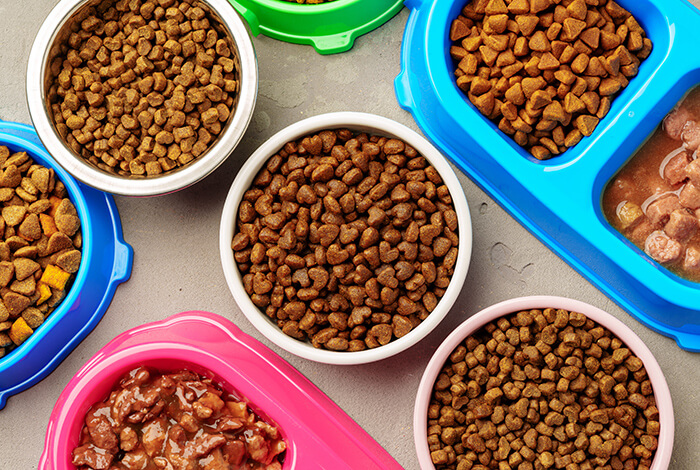 Megaesophagus in dogs can trigger bouts of regurgitation, which prevents proper sustenance and causes nutrient deficiencies.
Megaesophagus in dogs can trigger bouts of regurgitation, which prevents proper sustenance and causes nutrient deficiencies.
As a result, pets that develop this ailment usually end up underweight if not provided with the right meal.
The ideal choice for them is a complete and nutritionally balanced, caloric-dense dog food. It helps them maintain a healthy weight despite needing to eat smaller meals in a day.
Additionally, their meals must be low in fat to reduce the chances of regurgitation. Seek a veterinarian’s expertise to find the most suitable dog food for your furry pal.
3. Check the Consistency of the Food
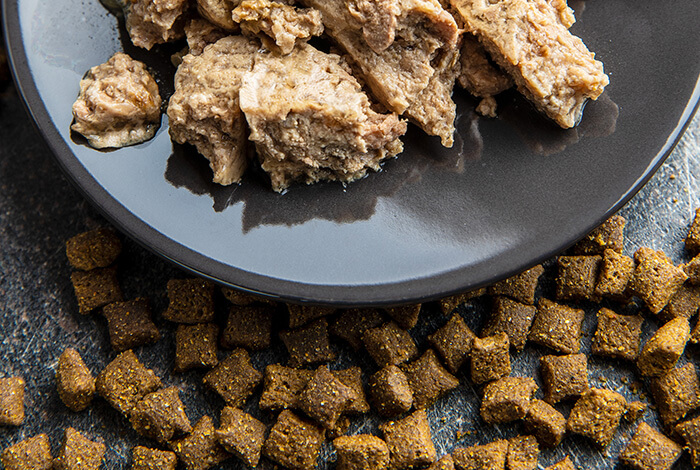 When megaesophagus in dogs occurs, dry food like kibble does not easily pass through from the esophagus to the digestive tract. Feeding this type of meal increases the chances of regurgitation.
When megaesophagus in dogs occurs, dry food like kibble does not easily pass through from the esophagus to the digestive tract. Feeding this type of meal increases the chances of regurgitation.
Softening kibble by soaking it in water works for some pets with this condition. Others do well with consuming wet, canned food or homemade dog food that is hand-rolled into small meatballs.
However, some canines cannot hold down these kinds of food. Thus, pawrents must create a runny gruel by blending dog food until fine and mixing it with water.
Use a fork to go through the mixture and break down any chunks that can accidentally get caught in their pet’s esophagus.
If you are considering going for this option, make sure to talk to a veterinarian first. In some cases, feeding foods that have a liquid consistency may cause aspiration pneumonia.
4. Keep Your Dog in an Upright Position When Feeding
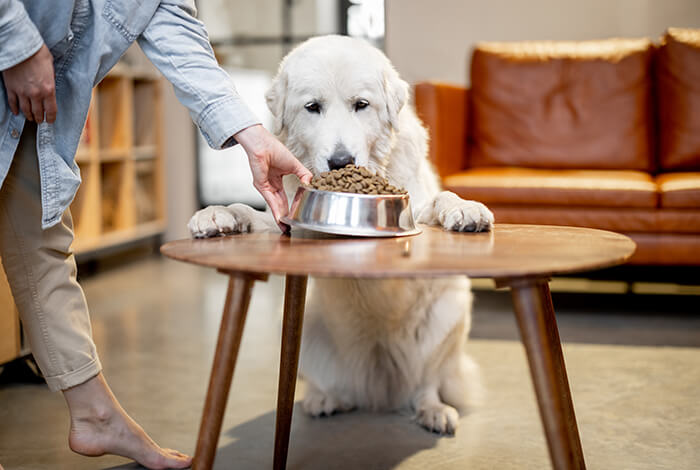 Severe forms of megaesophagus in dogs tend to induce regurgitation when eating food is done at a low angle. This position prevents food from traveling to the digestive system.
Severe forms of megaesophagus in dogs tend to induce regurgitation when eating food is done at a low angle. This position prevents food from traveling to the digestive system.
Hence, canines with this condition must be fed at a vertical position of about 45 to 90 degrees to the floor. By keeping their body at an upright angle, their meals can move to the stomach unimpeded.
The Bailey chair is specifically made for this reason and has helped many dogs with severe megaesophagus hold down their food during mealtimes.
On the other hand, if your canine companion’s condition is only mild, use an elevated feeding bowl instead. It must be tall enough to keep your pet from bending down while eating.
5. Do Not Let Your Dog Engage in Physical Activities After Eating
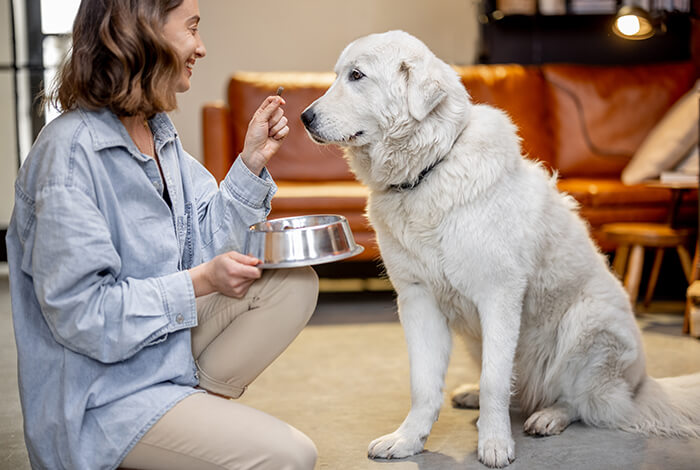 Food takes time to travel to the digestive tract. If you allow your pooch to play and lounge around after mealtime, it will disrupt his digestive process.
Food takes time to travel to the digestive tract. If you allow your pooch to play and lounge around after mealtime, it will disrupt his digestive process.
As such, make sure that he remains sitting upright once he is done eating. There is no definitive time of how long he should maintain this position. It usually varies from dog to dog.
Some only need 10 to 15 minutes for their food to fully travel from the esophagus to the digestive tract, while others will need 30 minutes or more.
It will take a few trials and errors on your end to find the ideal length of time that works for your furry pal.
6. Restrict Access to Water
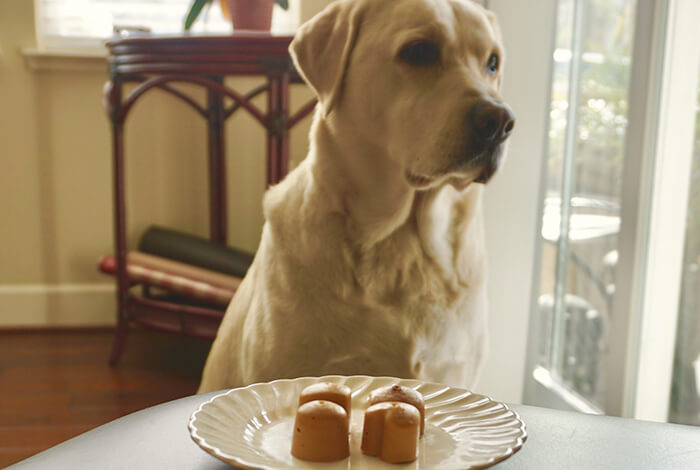 Megaesophagus in dogs often causes water intake to be a challenge. Many canines suffering from this illness regurgitate water after drinking, which heightens their risk of getting dehydrated.
Megaesophagus in dogs often causes water intake to be a challenge. Many canines suffering from this illness regurgitate water after drinking, which heightens their risk of getting dehydrated.
So do not let them have access to water bowls. If you live in a multipet household, make sure to place water bowls in a separate room, off-limits to pets with megaesophagus. Switching to wet dog food will help provide them with the hydration they require.
Your dog should be in a vertical position when drinking water. The Bailey chair comes in handy for this activity. If you are outdoors, simply hold him upright while you give him water.
Wait for at least 5 minutes before you let go of him. If he drinks large amounts of water, you will need to keep him in an upright position for longer. This ensures that the water has fully travelled to his digestive tract.
Another good idea is to make water jello for your canine companion. Do this by following the instructions below:
- Look for a plain, xylitol- and preservative-free gelatin powder.
- In a large bowl, combine a cup of water or low-sodium chicken broth with 4 envelopes of gelatin.
- Add 3 cups of boiling water and stir until all the gelatin is completely dissolved.
- Pour mixture into a 13×9-inch baking sheet and place it in the fridge overnight.
- Take it out of the fridge and slice the gelatin into bite-sized blocks.
- Put the cubes in a ziplock bag and keep them in the fridge if not in use.
FAQs About Megaesophagus in Dogs
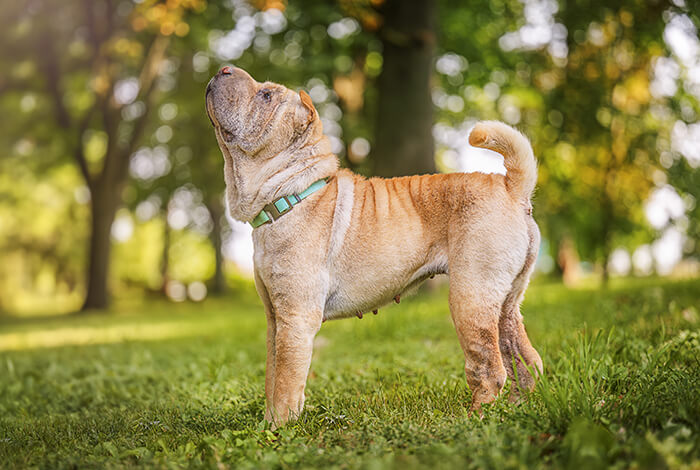
1. What Dog Breeds Are Prone to Megaesophagus?
Some dogs prone to megaesophagus are Chinese Shar-Peis, German Shepherds, Miniature Schnauzers, and Wire-Haired and Smooth-Haired Fox Terriers. This condition is a hereditary issue in these breeds.
Others canines, such as Samoyeds and Golden Retrievers, develop megaesophagus due to health problems like congenital myasthenia gravis, which weakens the nerves in the esophagus.
2. Can Megaesophagus in Dogs Be Cured?
While there is no definitive cure for megaesophagus in dogs yet, surgery was able to reverse this condition in some pets. However, this type of result for treatment is quite rare.
Fortunately, dogs with megaesophagus can live long and healthy lives as long as their owners provide them with proper supportive care.
3. How Often Should You Feed a Dog with Megaesophagus?
You should feed a dog with megaesophagus at least 3 to 4 times a day. Be sure to offer small meals since they pass from the esophagus to the digestive tract more smoothly.
4. How to Give Water to Dogs with Megaesophagus?
The right way to give water to dogs with megaesophagus is to keep them at a vertical angle. If you are indoors, a Bailey chair can help you with that.
Helping your pet drink outdoors will require more effort. You will need to hold him up by yourself unless you have someone else to assist you. If he is a small breed, a vertical pet carrier will make this task easier for you.
Conclusion
Megaesophagus in dogs is not an easy illness to deal with. Being equipped with the right knowledge provides you with strategies on how you can make your pet’s life manageable even if he is battling this kind of condition.

